AYANEO KUN Impressions
The handheld gaming PC market has never been so vibrant, with more options on the market than current-gen home consoles. However, with massive players such as Steam and ASUS making a serious move in this gaming sphere, smaller players might have a tougher time standing out in this competitive landscape. Despite being a smaller company, AYANEO is showing no signs of backing down and has been making a name for itself with premium-grade devices. The company even recently aired a livestream about its upcoming lineup of devices, the AYANEO REMAKE line, that includes retro-inspired handheld gaming PCs, mini-PCs and accessories.
While we’ll have to wait for the models within this line to become available, AYANEO has other options for you to consider. In fact, its most powerful, most premium device to date is available to purchase and should be shipping this month. I am speaking of the AYANEO KUN, which starts at $999 on the Indiegogo campaign page. As this is a crowdfunded project, caution is advised but AYANEO has a strong track record of shipping its products and this isn’t the first time that the company is going the crowdfunded route. In this impressions piece, I will share my experience after using the device for about a week.
AYANEO has traditionally paid much thought to its packaging to offer a premium and unique feel to its products. For instance, their recent AYANEO Pocket Air Retro Edition featured retro-themed packaging even for the accessories that felt apt for an emulation device. But the premium appeal and attention to the unboxing experience has never been more evident than with the AYANEO KUN.
This handheld comes in a wooden box and that alone would have set it apart but that’s not all. The wooden box’s sliding cover is adorned with some classy print that even makes it suitable to be used as a desktop memorabilia for bragging rights. There’s also a hardcover, folded booklet that would have passed for a traditional scroll. The latter in fact shares the story behind the console’s namesake which hails from the ancient Chinese text Zhuangzi and also doubles as the device manual.
The packaging is definitely overkill for a console but also shows that with the premium price tag comes a premium packaging; and I haven’t seen any handheld packaging any more premium than that.
When it comes to hardware, the AYANEO KUN also reflects its price tag. It sits neatly in the hands, with the curved lower ends accommodating the palms to make for an ergonomic experience. Such an experience is indeed required as the KUN is quite hefty at 950g and you’ll want an ergonomic and comfortable device to game on. Each key feels nice to the press and is easily accessible. Same goes for the back buttons which I think personally should be inclusions for every handheld and controller going forward. The joysticks are hall-based ones and offer a silky smooth feedback when used. However, the volume rocker requires some reach and might have been better positioned as a face button reachable with your thumbs.
While the design is clearly inspired by the Steam Deck, the KUN packs its own twist to the formula. It has a front-facing camera which is mostly appropriate for face unlock and the button layout is still very much an Xbox-styled one. The KUN is also AYANEO’s first device to feature trackpads. These are very responsive and make navigating the Windows 11 interface much easier. They are indeed very welcome to set up the device and download gaming software as the large screen can make tapping on the touchscreen awkward. The touchpads are perfect for operating Windows 11 on a handheld as Windows isn’t exactly that friendly to use on larger touchscreen devices.
As AYANEO’s top-of-the-line model equipped with the AMD 7840U chip, the KUN will handle practically every PC game you throw at it, even the latest titles. For instance, The Invincible plays at a smooth 60fps on the highest graphical settings, Days Gone‘s PC port runs at around 40 fps on high settings and Alan Wake 2 runs at 30 fps on medium settings. These performances are reflective of the device running at 30W TDP; and this is not the best the device can achieve as this can be cranked up to 54W for better performance.
The AYA Space app allows you to easily do so at the press of a button. It’s a neat companion to the KUN as AYANEO has fleshed out its software over the years to provide some really handy, user-friendly options such as adjusting TDP and fan speed, toggling performance overlay and customising shortcuts and back buttons.
While I prefer handhelds to be smaller in general, the AYANEO KUN puts its large size to good use as the screen real estate it provides is remarkable. The massive (for handheld standards) 8.4" 2.5K IPS Screen delivers vibrant visuals with colours that pop. It really makes for an engrossing experience, especially for visually stunning games such as The Invincible and Days Gone, and the KUN does justice to those titles, even in its portable form factor.
Another draw to the KUN’s specs is its massive 75Wh/19500 mAh battery. This is larger than the 40Wh battery of the Steam Deck and ROG ALLY, and the KUN's chunkier one really makes a difference as it lets you game without having to worry. You might have to compromise between the graphics, fps and TDP settings, but I found that 30W TDP to be a sweet spot for providing around 3 hours of gaming on the newest as well as AAA games. And if you’re encountering some performance issues, you can still provide more power at the press of a button. Of course, for less demanding titles, you can expect even more game time.
It’s worth noting that despite the high power output that the KUN can deliver, the device doesn’t get overly hot. This is thanks to AYANEO’s custom heat dissipation that effectively cools the device to make it useable, even for extended AAA gaming.
With its specs, the AYANEO KUN is also well suited for emulation. I’ve had the time to test Switch emulation performance through Yuzu and was more than satisfied with the experience. At 15W TDP, Super Mario Odyssey runs at 60fps, with few dips in performance in open areas, and Furi runs at 45-50fps. By bumping up the TDP, you can expect better, more consistent performance on the system.
The AYANEO KUN won’t disappoint in terms of performance. It will play practically every PC game you throw at it and also deliver compelling emulation performance at the convenience of a handheld device. By hooking it up to a monitor or even just a bluetooth keyboard, it can even double as a portable workstation. Its generous battery capacity and specs enables it to be this versatile.
However, at its starting price, the AYANEO KUN might not be as attractive of an option for a lot of gamers, especially considering what the competition has to offer. But if the latter models aren’t available in your area and/or the import fee would raise the cost further, you might want to consider the KUN as it ships worldwide. This device not only stands out not only with its unique packaging and premium craftsmanship, but also with its gaming performance, massive screen size, adjustable TDP of up to 54W and generous battery life. The device will target a niche audience and considering that the crowdfunding campaign has hit its funding goals, it does seem that there is indeed a demand for this device, despite being niche.





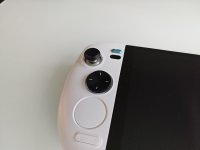


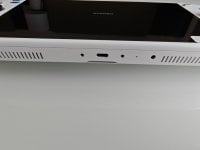

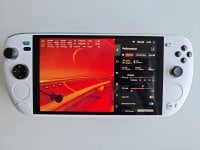
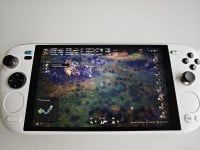
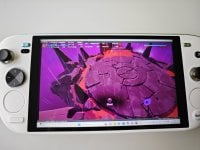



 can It run Window? also can install trainers ?
can It run Window? also can install trainers ?